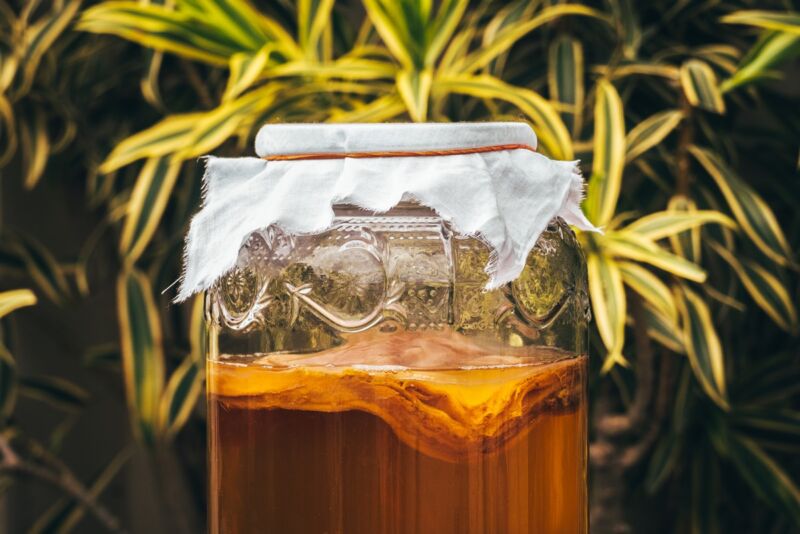Kombucha electronics? Sure, why not?

Enlarge / Brewing kombucha tea. Note the trademark gel-like layer of SCOBY (symbiotic culture of bacteria and yeast). (credit: Olga Pankova/Getty Images)
Cheap, light, flexible, yet robust circuit boards are critical for wearable electronics, among other applications. In the future, those electronics might be printed on flexible circuits made out of bacterial cultures used to make the popular fermented black tea drink called kombucha, according to a recent paper posted to the arXiv preprint server.
As we've reported previously, making kombucha merely requires combining tea and sugar with a kombucha culture known as a SCOBY (symbiotic culture of bacteria and yeast), aka the "mother"-also known as a tea mushroom, tea fungus, or a Manchurian mushroom. It's akin to a sourdough starter. A SCOBY is a firm, gel-like collection of cellulose fiber (biofilm), courtesy of the active bacteria in the culture creating the perfect breeding ground for the yeast and bacteria to flourish. Dissolve the sugar in non-chlorinated boiling water, then steep some tea leaves of your choice in the hot sugar-water before discarding them.
Once the tea cools, add the SCOBY and pour the whole thing into a sterilized beaker or jar. Then cover the beaker or jar with a paper towel or cheesecloth to keep out insects, let it sit for two to three weeks, and voila! You've got your own home-brewed kombucha. A new "daughter" SCOBY will be floating right at the top of the liquid (technically known in this form as a pellicle).